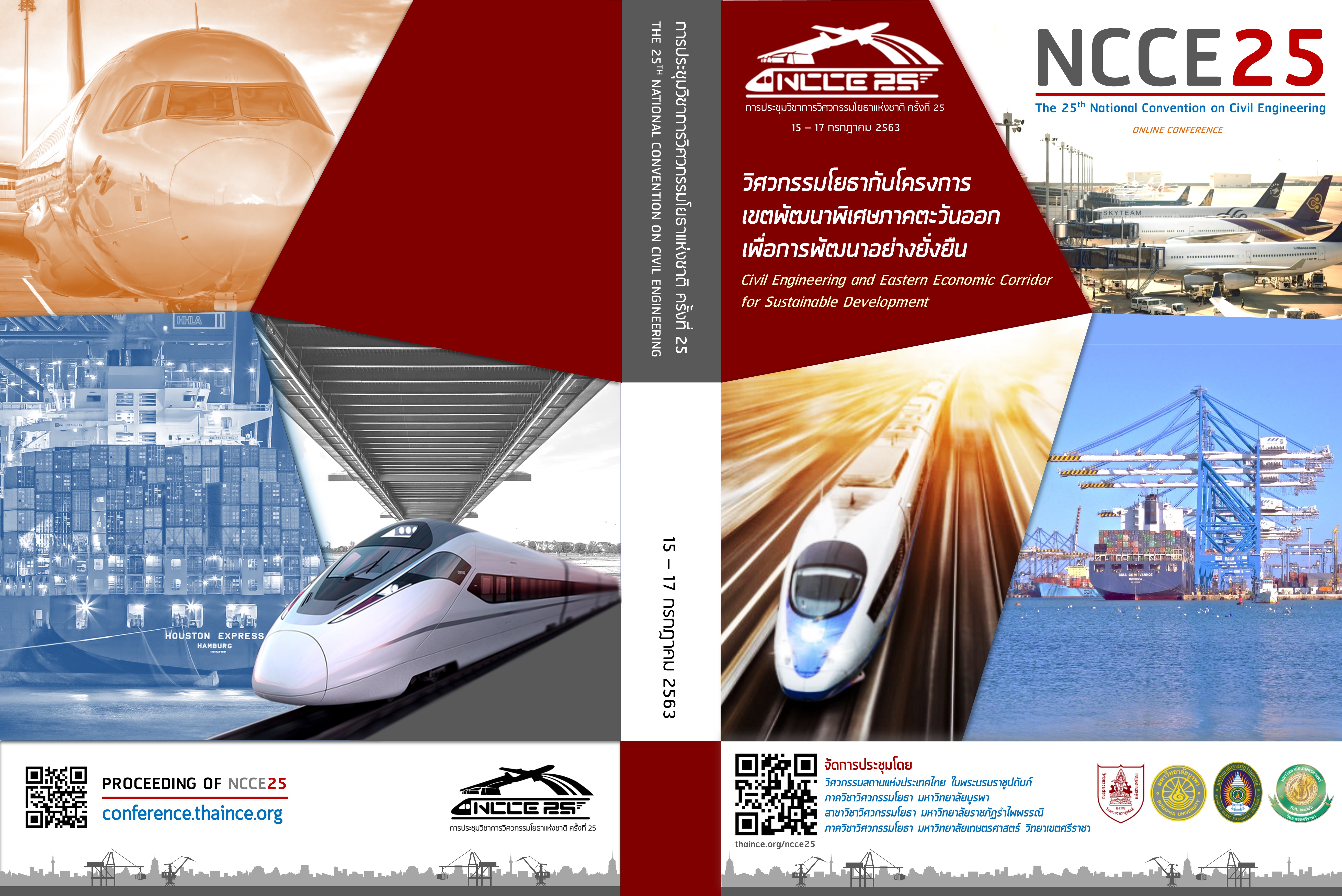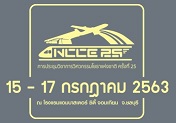Earthquake Resistance of Non-Ductile Reinforce Concrete Building
Keywords:
Earthquake resistance, RC.Building, non-ductileAbstract
This study emphasized to investigate the earthquake force resistance of non-ductile the reinforced concrete building constructed in Thailand. The 4-story RC building was adopted to evaluate the earthquake resistance capacity when it subjected to earthquake forces. A 4-story RC building is assumed to locate in three intensity levels of Thailand’s hazard area, surveillance zone, the first zone, and the second zone. The RC frame was modeled as a two-dimensional. The moment-rotation relationship consists of the yielding moment, capping moment, and capping rotation obtained in the plastic hinge model. The capacity curve indicated that the 4-story RC building remains elastic behavior when the earthquake force regarded as base shear subjected to the building not more than 10653-kilogram forces and it can resist the maximum base shear in an inelastic range around 17140-kilogram forces before the collapse. When the building subjected to the earthquake forces from three intensity levels of Thailand’s hazard area, the beam and column were severely damaged and the global behavior of the building beyond the level of collapse prevention means the building is collapse.
Downloads
References
[2] Chenouda, M. and Ayoub, a. (2008). Inelastic displacement ratios of degrading system. Journal of Structural Engineering. 134:6, 1030-1045
[3] Jaiyong, A. and Chintanapakdee, C. (2011). Modal Pushover Analysis for Degrading Structures. Ph.D. Thesis, Chulalongkorn University, Bangkok, Thailand.
[4] Lowes, L.N., Mitra, N. and Altoontash, A. (2003). A Beam Column Joint Model for Simulating the Earthquake Response of Reinforced Concrete Frame, PEER Report 2003/10. Berkeley: Pacific Engineering Research Center, University of California
[5] Panagiotakos, T.B. and Fardis, M.N. (2001). Deformations of reinforced concrete members at yielding and ultimate. ACI Structural Journal. 98:2, 135-147.
[6] Haselton, C.B. and Deierlein, G.G. (2007). Assessing seismic collapse safety of modern reinforced concrete moment-frame buildings, Report No. 152. California: John A. Blume Earthquake Engineering Center, Stanford University.
[7] Applied Technology Council (ATC-40), “Seismic evaluation and retrofit of concrete buildings”, Vol. 1-2, California, 1996, pp 8-6.
[8] กรมโยธาธิการและผังเมือง, “มาตรฐานการออแบบอาคารต้านทานการสั่นสะเทือนของแผ่นดินไหว มยผ.1301/1302-61”, พิมพ์ครั้งที่1, กรุงเทพฯ: สำนักควบคุมและตรวจสอบอาคาร กรมโยธาธิการและผังเมือง, 2561.
[9] กรมโยธาธิการและผังเมือง, “มาตรฐานการออแบบอาคารต้านทานการสั่นสะเทือนของแผ่นดินไหว มยผ.1302”, พิมพ์ครั้งที่1, กรุงเทพฯ: สำนักควบคุมและตรวจสอบอาคาร กรมโยธาธิการและผังเมือง, 2552.
[10] กรมโยธาธิการและผังเมือง, “มาตรฐานการประเมินและการเสริมความมั่นคงแข็งแรงของโครงสร้างอาคารในเขตที่อาจได้รับแรงสั่นสะเทือนของแผ่นดินไหว มยผ. 1303-57,” พิมพ์ครั้งที่ 1, กรุงเทพฯ: สำนักควบคุมและตรวจสอบอาคาร กรมโยธาธิการและผังเมือง, 2557.
Downloads
Published
How to Cite
Issue
Section
License
บทความทั้งหมดที่ได้รับการคัดเลือกให้นำเสนอผลงานในการประชุมวิชาการวิศวกรรมโยธาแห่งชาติ ครั้งที่ 25 นี้ เป็นลิขสิทธิ์ของ วิศวกรรมสถานแห่งประเทศไทย ในพระบรมราชูปถัมภ์



